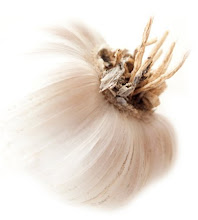
Six years ago I knew how to defrost a pizza, make an egg and chop a salad. My favorite sandwich contained a bag of crisps and I thought that the ultra sweet and artificial tasting Chai tea latte was the greatest invention ever. I came a long way since then, unintentionally. Perhaps it was an inner understanding that I need to start taking care of myself and the realization that I needed to start caring. i never got to cook for him, though. Until this Friday.
My dad passed in December, and fittingly, it is a cold and raining season. It became a sort of tradition of making heavy Jewish comforting stews, specifically tchulnt, to commemorate him. T This year I was in charge.
There are two secrets to making a Tchulnt:
1. Its really quick and simple to make.
2. It cooks for so long, its practically impossible to ruin it as all the flavors have hours to build up and caramelize.
The Tchulnt originates in the European Diaspora, and as observant Jews did and do not cook on the Sabbath (Saturday), various techniques were developed to provide for a hot meal on Sabbath day. Tchulnt comes from the French 'chaud lent', literally meaning slow heat. It is a slow-cooked stew of meat, potatoes, beans and barley, with an endless variety of recipes. The ingredients are placed in a pot and put up to boil before lighting the candles on Friday night after which the pot is placed on a hotplate, or in an oven on a low heat, where it is left to simmer until the following day.
This is pure comfort food and a serious rib sticker, perfect for a cold winter day.
With the pot containing all the heavy and comforting elements of the meal,everything surrounding the Tchulnt should be light, fresh and tangy. I made a fresh salsa, and an orange & anchovies salad on the side. Vodka or anise type spirit work best, and a dry Lambrusco proved a successful lighter alternative.
Tchulnt
Serves about 10
(Make sure to use a large ovenproof saucepan)
Olive oil
1 Tbs sugar
6 Desiree potatoes, peeled
1 thin rib, de-boned
Smoked duck breast, fat removed.
1 cup wheat (can be substituted with barley, quinoa or other grains)
1 ½ cups two different types of beans, soaked overnight
Eggs, washed (count half an egg for every person).
Kishkes (intestines filled with a bread mixture that can be bought at a kosher butcher)
2 Tomatoes, squashed
Salt
Pepper
A couple of bay leafs
If you prefer serving each of the ingredients separately, the beans and wheat can be cooked in cheesecloth, so they soak the flavors but don’t mix with the rest. Otherwise, a hot mess is equally comforting. The ingredients are laid out in the pot in the following order:
Heat a little olive oil in the saucepan. Add the sugar, followed by the onions. Layout the potatoes and sprinkle with salt.
Carefully place the thin rib on top and the smoked duck breast. This gives a wonderful smoked flavor to the dish, that can be substituted with a smoked rib or sausage. Throw in the bay leafs and the tomatoes. Prick the kishkes with a fork and place it in the centre, surrounded with the eggs. This is also a good time to add the leftovers from the kugel.
Fill with water so that everything is just covered, add salt and pepper and bring to a boil.
Once boiled cover the saucepan with foil and the lid and reduce to a low heat. Turn the oven to 100 degrees, and transfer the saucepan overnight. Make sure that water is always covering the stew- and never dry.
The Tchultnt will be ready for lunch the next day and in the meanwhile the house will fill with the most wonderful smell of home.
To serve, place each of the elements on a serving plate, peal and half the eggs, slice the intestines, cut the potatoes, and mound the beans and grains.
These are basic guidelines only, and open for variations; you can add chicken, bread dumplings, meat balls- anything heavy and hearty that can stand a long and slow cooking.
To my Father.






















